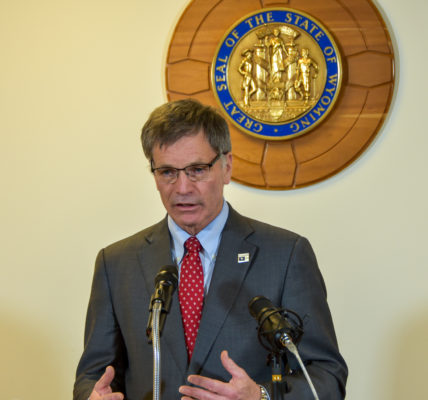
By Nicole Pollack
Casper Star-Tribune
Via- Wyoming News Exchange
CASPER –– A year after the number of drilling rigs in Wyoming fell to zero for the first time in more than a century, the state’s rig count is inching back up. Oil prices have rebounded from their below-zero pandemic lows to more than $70 per barrel, outperforming expectations for this year.
But new drilling in Wyoming has recovered more slowly than prices might suggest.
The average monthly rig count varies widely by year: 54 in 2015, 27 in 2016, 11 in 2017, 22 in 2018, 33 in 2019 — and eight in 2020.
That count hit zero twice, first in June 2020 and again in August.
It currently stands at 11.
Wyoming’s oil wells tend to be more highly concentrated on federal lands — where new drilling must undergo a more extensive regulatory process — and located farther from markets than wells in neighboring states.
Wyoming also imposes higher taxes on oil and gas production compared with other states. Those factors all raise companies’ operating costs.
“The fact that we just have such an abundance of oil and gas here makes it an attractive place to be,” said Ryan McConnaughey, a spokesperson for the Petroleum Association of Wyoming. “That being said, the prices for oil and gas have to be on the higher end globally for that to be a profitable venture for companies.”
One rig translates to about 100 jobs, according to the petroleum association, and last year’s mass layoffs are contributing to the slow increase in production as companies rehire and retrain rig crews.
And as travel increases and global oil sales resume, decision-makers are still waiting to see whether prices hold. If they do stay high, the industry is likely to see a steady recovery.
“As the global markets come back into balance and we start to see that demand really come back and people’s confidence in the markets rebound, we expect to see the rig counts increase,” McConnaughey said.
But another price drop as supply continues to shift could cut significantly into drillers’ profits — and into their willingness to invest in Wyoming oil.
“Operators are going to risk investment capital if they feel like they’re going to make a good return, and so that all factors into whether they want to drill in the Permian Basin, or in North Dakota, or Oklahoma or Wyoming,” said Steve Degenfelder, land manager for Kirkwood Oil and Gas.
While the oil and gas industry applauded a preliminary injunction in Louisiana last week that blocked President Joe Biden’s freeze on lease sales for new drilling on public lands, it’s not yet clear whether the ruling will hold, how many leases will be sold if the next leasing sale does take place or how the Biden administration plans to modify the leasing program in the long term.
Uncertainty around new drilling on public lands is furthering oil and gas companies’ hesitancy to make investments in Wyoming.
“It does not make Wyoming a predictable place to conduct business, and that is not a positive when companies are considering where to deploy their capital,” Degenfelder said.
The status of the oil industry will play a major role in Wyoming’s ongoing recovery from the pandemic-driven collapse in energy demand last year.
Increasing oil development will lead directly to more funding for the state government, said Mark Watson, director of the Wyoming Oil and Gas Conservation Commission.
“Sixty-five percent of the state’s revenue comes from oil and gas and coal,” Watson said. “So when you had all three down — it’s a three-legged stool and you cut off all three legs.”
That sudden loss of revenue was unwelcome even to conservation groups that would ordinarily support the removal of drilling rigs. A statewide crisis doesn’t do much to help wildlife, said Alan Rogers, a spokesman for the Wyoming Outdoor Council.
“When our state budget gets into crunch, and people are concerned about the future, that’s when bad decisions are made,” Rogers said. “That’s not when people want to sit down and think about creating or updating the regulations, or things like that. That’s when people start saying, ‘OK, what do we need to do to start producing more?’”





